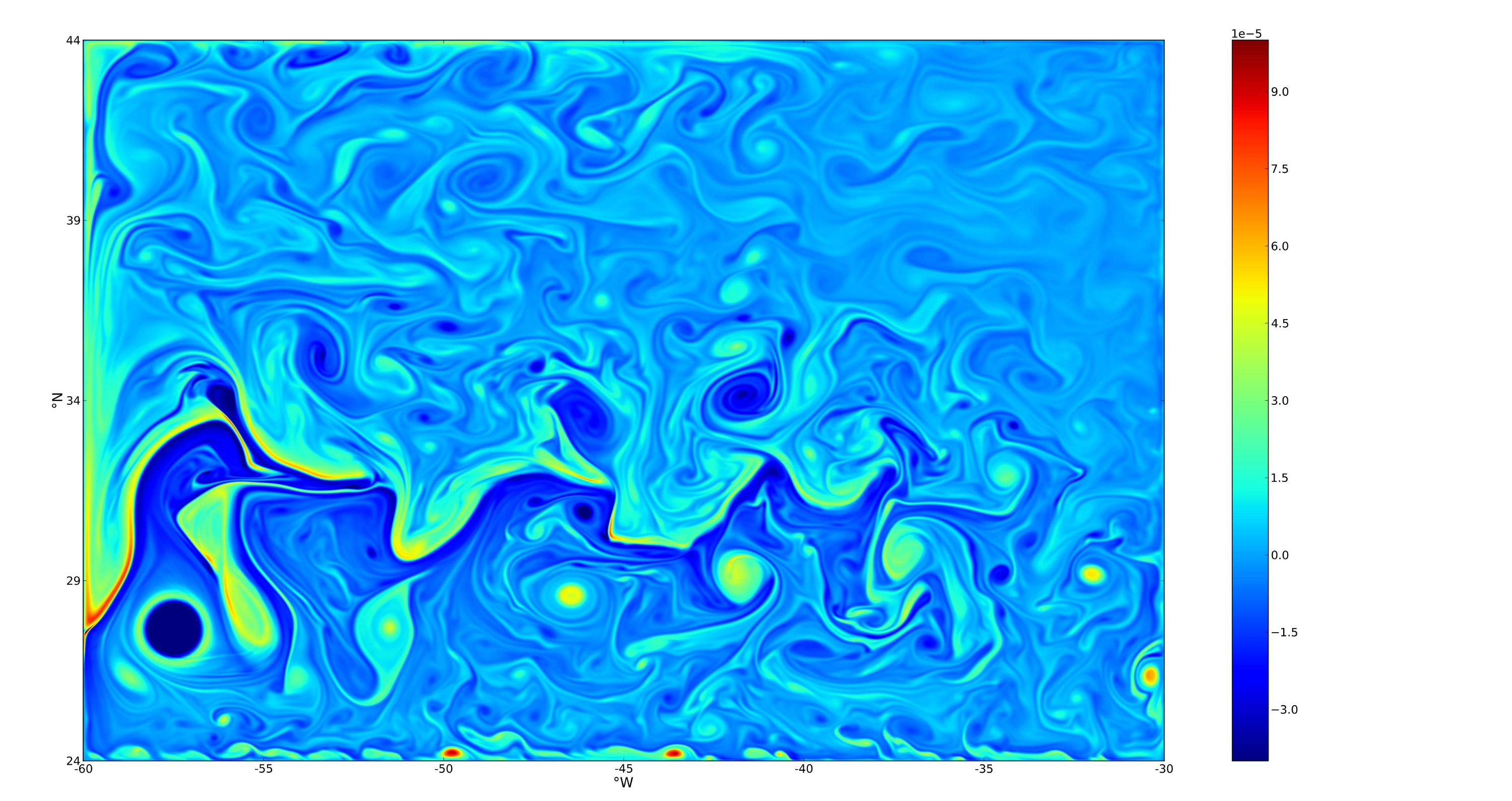Section: New Results
Data Assimilation for Geophysical Models
Development of a Variational Data Assimilation System for OPA9/NEMO
Participants : Arthur Vidard, Pierre-Antoine Bouttier, Eric Blayo.
We are heavily involved in the development of NEMOVAR (Variational assimilation for NEMO). For several years now, we built a working group (coordinated by A. Vidard) in order to bring together various NEMOVAR user-groups with diverse scientific interests (ranging from singular vector and sensitivity studies to specific issues in variational assimilation). It has led to the creation of the VODA (Variational Ocean Data Assimilation for multi scales applications) ANR project (ended in 2012). A new project, part of a larger EU-FP7 project (ERA-CLIM2) has just started in january 2014.
The project aims at delivering a common NEMOVAR platform based on NEMO platform for 3D and 4D variational assimilation. Following 2009-11 VODA activities, a fully parallel version of NEMOTAM (Tangent and Adjoint Model for NEMO) is now available for the community in the standard NEMO version. This version is based on the released 3.4.1 version of NEMO.
We are also investigating variational data assimilation methods applied to high resolution ocean numerical models (see figure 2 ). This part of the project is now well advanced and encouraging preliminary results are available on an idealised numerical configuration of an oceanic basin. Several novative diagnostics have been also developed in this framework as part of P.A. Bouttier’s PhD that was defended early 2014 [1] .
|
Lastly, multi resolution algorithms have been developed to solve the variational problem. An EU-ITN (International Training Network) project is going to be submitted early 2015 to continue working in this particular aspect.
Ensemble Kalman Filtering for Large Scale Ice-Sheet Models
Participants : Bertrand Bonan, Maëlle Nodet, Catherine Ritz.
In collaboration with C. Ritz (CNRS, Laboratoire de Glaciologie et Geophysique de l'Environnement (LGGE), Grenoble), we aim to develop inverse methods for ice cap models.
In the framework of global warming, the evolution of sea level is a major but ill-known phenomenon. It is difficult to validate the models which are used to predict the sea level elevation, because observations are heterogeneous and sparse.
Data acquisition in polar glaciology is difficult and expensive. Satellite data have a good spatial coverage, but they allow only indirect observation of the interesting data. Moreover, ice dynamics processes are highly non linear and involve many feedback loops, so that classical linear data assimilation gives poor results.
B. Bonan defended his PhD in November 2013 on this subject. We implemented the Ensemble Transform Kalman Filter (ETKF) algorithm for a flowline Shallow-Ice model, called Winnie, developed by C. Ritz at LGGE. On twin experiments we got interesting results, very promising for the future, as we want to implement this method into a full 3D model. A journal paper has published on this subject [5] , and the results have been presented in the conference [46] .


